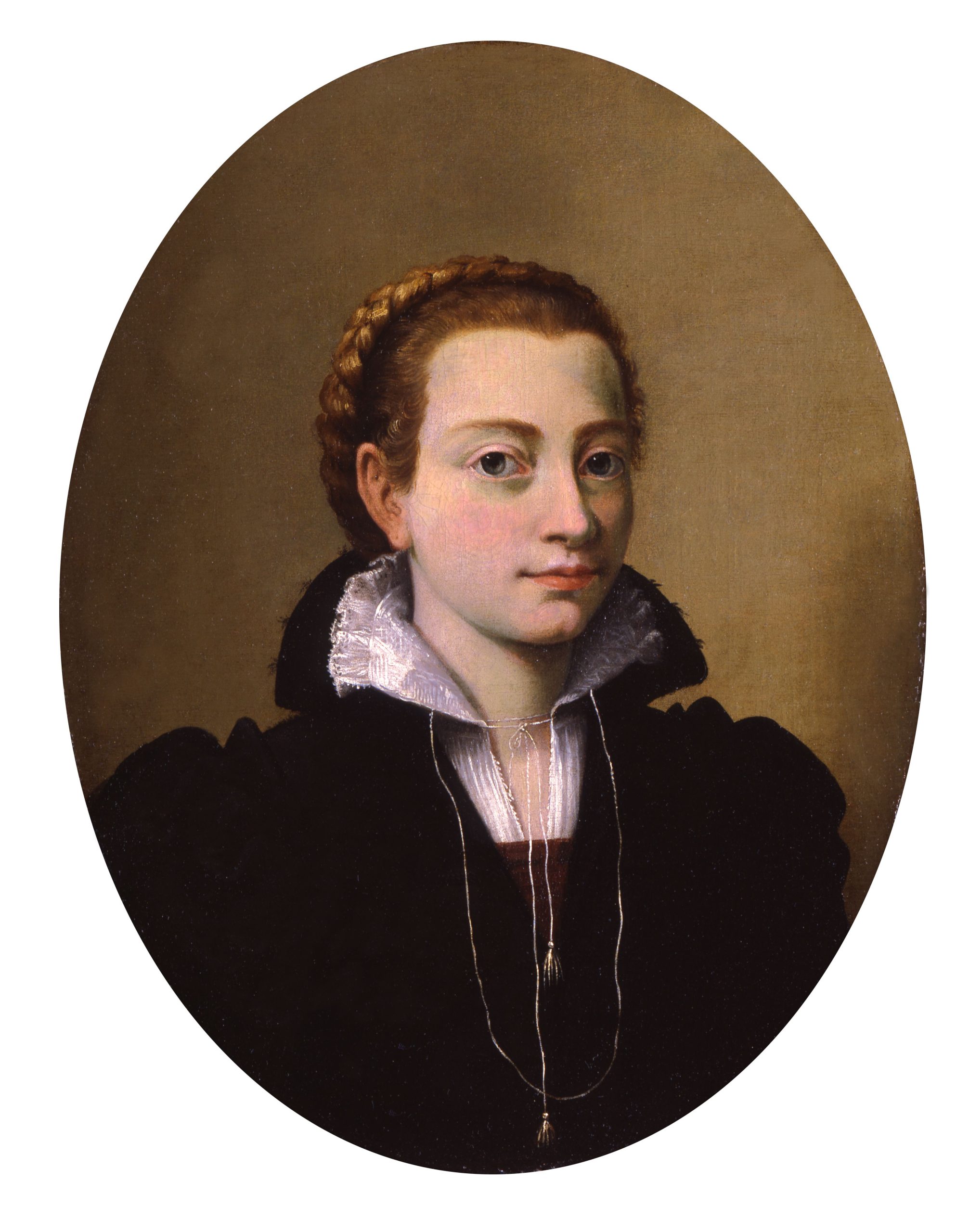
SOFONISBA ANGUISSOLA
(Cremona, 1532 – Palermo, 1625)
Portrait of a Young Woman
1558 circa
Oil on canvas
63,5×54,5 cm
Museo Poldi Pezzoli, Milan

ARTWORK
Dating from around 1558, this painting was believed to be a self-portrait of the Cremonese painter Sofonisba Anguissola. However, other recent theories have emerged regarding its authorship: the work has been attributed to her sister Lucia, while the young woman depicted has been identified as Minerva, another of Amilcare Anguissola’s five daughters. While Sofonisba was the only one to become famous, even working at the Spanish court as a portraitist, she was not the only one trained in painting. Her other sisters were also painters, as noted by Vasari, who visited the Anguissola home on a trip to Cremona and admired works by the sisters, whom he described as ‘virtuosos’.
The young woman is depicted half-bust on an oval canvas (a widespread format common for miniatures at the time). Her black dress contrasts with the white shirt, of which we can only see the collar and the ribbon descending over the chest. A braid crowns the sitter’s head. While her face is turned slightly to the right, her gaze is directed towards the viewer. At first glance, the painting appears quite simple, but upon closer inspection, the care with which it was executed becomes clear.
This is revealed in the accurate details, with effects recalling Flemish art: for example, the eyes, the hair, the lace on the collar, and devices like the light background, which highlights the figure and hints at the surrounding space.
BIOGRAPHY
Sofonisba Anguissola, born in 1532 in Cremona, was one of the first famous female painters and the first to gain international fame. Her father was an aristocrat, not an artist as was the case for many of her peers. He entrusted her to Bernardino Campi, an important local painter, to learn art. She was held in high regard by Michelangelo, whom she met in Rome, and to whom she sent her drawings.
Her fame as an artist was such that in 1559 Philip II of Spain called her to the court of Madrid where, in addition to painting royal portraits, she was a lady-in-waiting to the young Isabella Clara Eugenia. She was first married in 1571 but her husband died. Then in 1580 she married a Genoese nobleman with whom she lived first in Genoa and then in Palermo. She died in her nineties in Palermo in 1625. A year before then, she was visited by the Flemish painter Antoon van Dyck, who admired her work. After their meeting, he said: ‘I learned more from this blind 90-year-old woman than from my contemporaries’.
